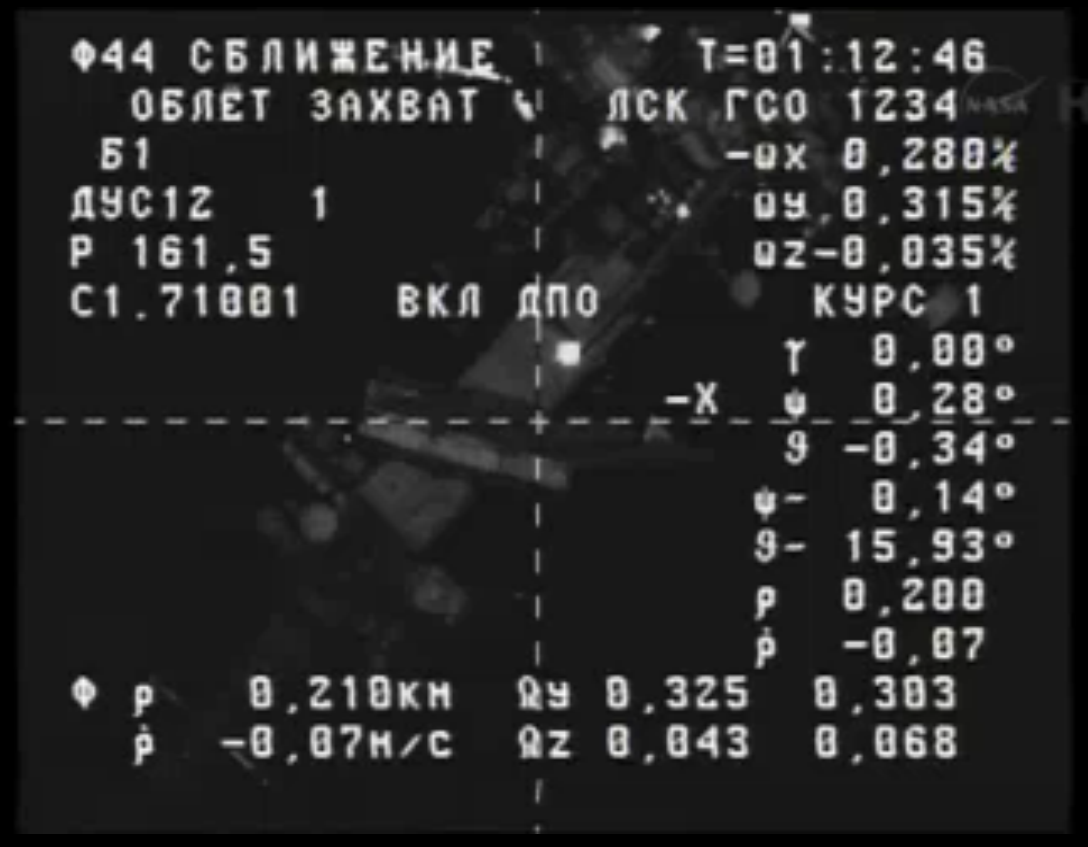Unmanned Russian Cargo Ship Docks with Space Station

An unmanned cargo ship docked with the International Space Station today (Nov. 29), delivering a load of cosmic holiday goodies to the residents of the orbiting outpost.
The robotic Russian Progress 53 ship arrived at the station at 5:30 p.m. EST (2230 GMT) after launching from the Baikonur Cosmodrome in Kazakhstan on Nov. 25. The resupply ship is loaded up with food, fuel and other supplies, including personal cards and holiday wishes for the station's Expedition 38 crew.
It usually takes Progress spacecraft one or two days to dock with the orbiting outpost, however, this ship was testing out a new automated docking system before approaching the station. While the Kurs system tested "flawlessly" on Wednesday, according to NASA officials, the docking was not quite as smooth. The new automated system switched into an unexpected mode as the Progress flew toward the station, forcing Russian cosmonaut and space station resident Oleg Kotov to take over the docking. Kotov smoothly brought the spacecraft into port. [See photos of the Progress 53's launch]
"The Kurs system had brought the Progress automatically in from station keeping mode from a distance of just 70 meters away from the space station," NASA spokesman Rob Navias said during live coverage of the docking. "Then, at the 60 meter mark, the Kurs system unexpectedly went into a station keeping mode for the Progress that defaulted automatically, causing Oleg Kotov — the Expedition 38 commander — to take over manual control of the flying of the Progress at a distance of just 60 meters, manually guiding in the Progress on a joystick from a command panel in the Zvezda service module as he slowly but surely guided the Progress in for a smooth and uneventful link up."
The Progress 53 spacecraft launched with 1,763 pounds (800 kilograms) of propellant, 3,119 pounds (1,415 kg) of spare parts, holiday gifts and experiment hardware, 48 pounds (22 kg) of oxygen, 57 pounds (26 kg) of air and 925 pounds (419 kg) of water and to the space station, NASA officials said.
After leaving the space station, Progress vehicles burn up in Earth's atmosphere. Progress spacecraft are disposable 3-module vehicles like Russia's Soyuz capsules, which bring humans to the station. Instead of a crew module, as in the Soyuz, Progress vessels carry a module filled with fuel.
Russian cosmonauts Mikhail Tyurin, Sergey Ryazanskiy join Kotov on the station. NASA astronauts Rick Mastracchio and Mike Hopkins and Japanese space agency astronaut Kiochi Wakata round out the station's current crew.
Get the Space.com Newsletter
Breaking space news, the latest updates on rocket launches, skywatching events and more!
Other robotic spaceships are also responsible for taking supplies to the space station. Two firms — SpaceX and Orbital Sciences Corp. — fly missions using their unmanned spacecraft under contracts with NASA. Europe's Automated Transfer Vehicles and Japan's H-II Transfer Vehicles also visit the orbiting outpost to bring goods to the crew.
Follow Miriam Kramer @mirikramer and Google+. Follow us @Spacedotcom, Facebook and Google+. Original article on SPACE.com.
Join our Space Forums to keep talking space on the latest missions, night sky and more! And if you have a news tip, correction or comment, let us know at: community@space.com.

Miriam Kramer joined Space.com as a Staff Writer in December 2012. Since then, she has floated in weightlessness on a zero-gravity flight, felt the pull of 4-Gs in a trainer aircraft and watched rockets soar into space from Florida and Virginia. She also served as Space.com's lead space entertainment reporter, and enjoys all aspects of space news, astronomy and commercial spaceflight. Miriam has also presented space stories during live interviews with Fox News and other TV and radio outlets. She originally hails from Knoxville, Tennessee where she and her family would take trips to dark spots on the outskirts of town to watch meteor showers every year. She loves to travel and one day hopes to see the northern lights in person. Miriam is currently a space reporter with Axios, writing the Axios Space newsletter. You can follow Miriam on Twitter.









